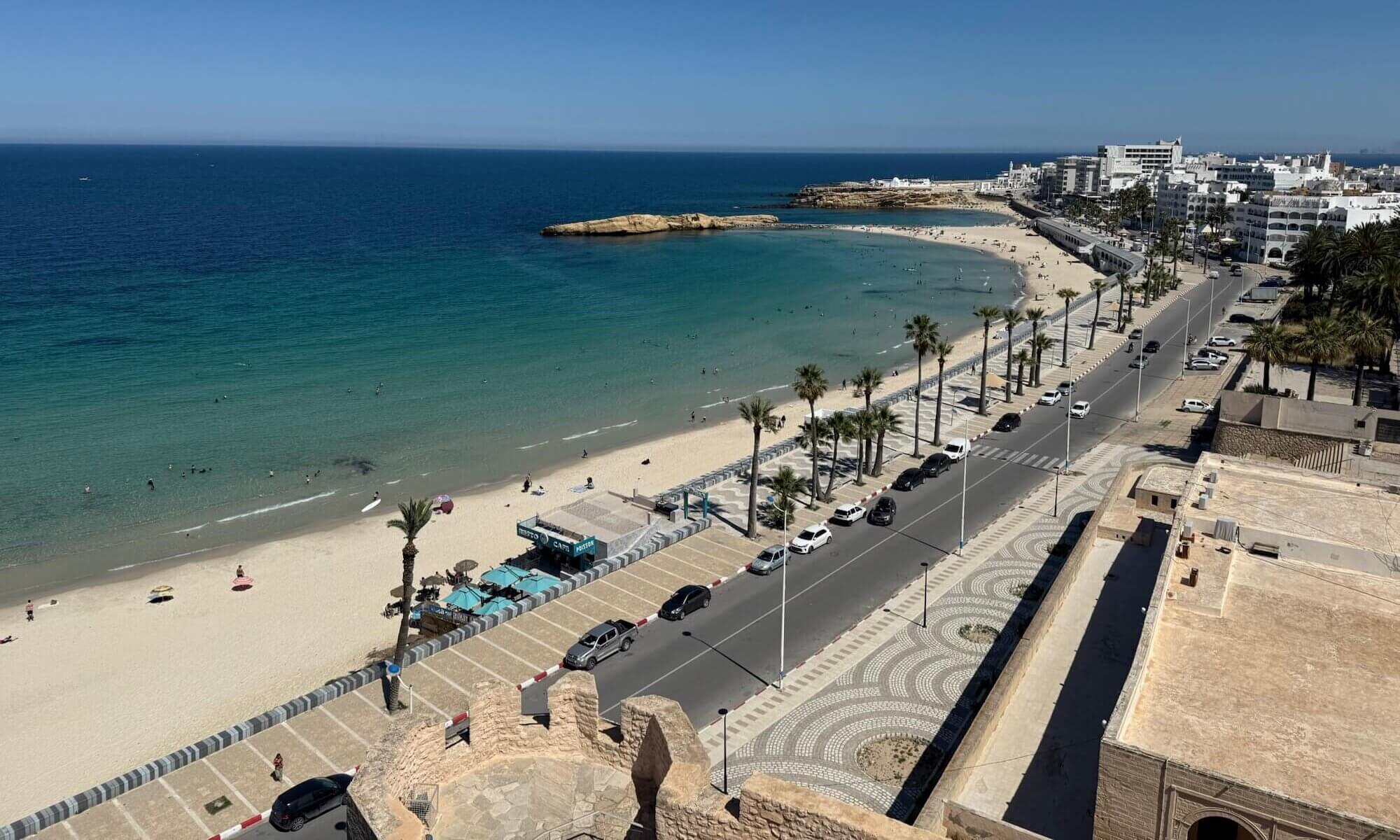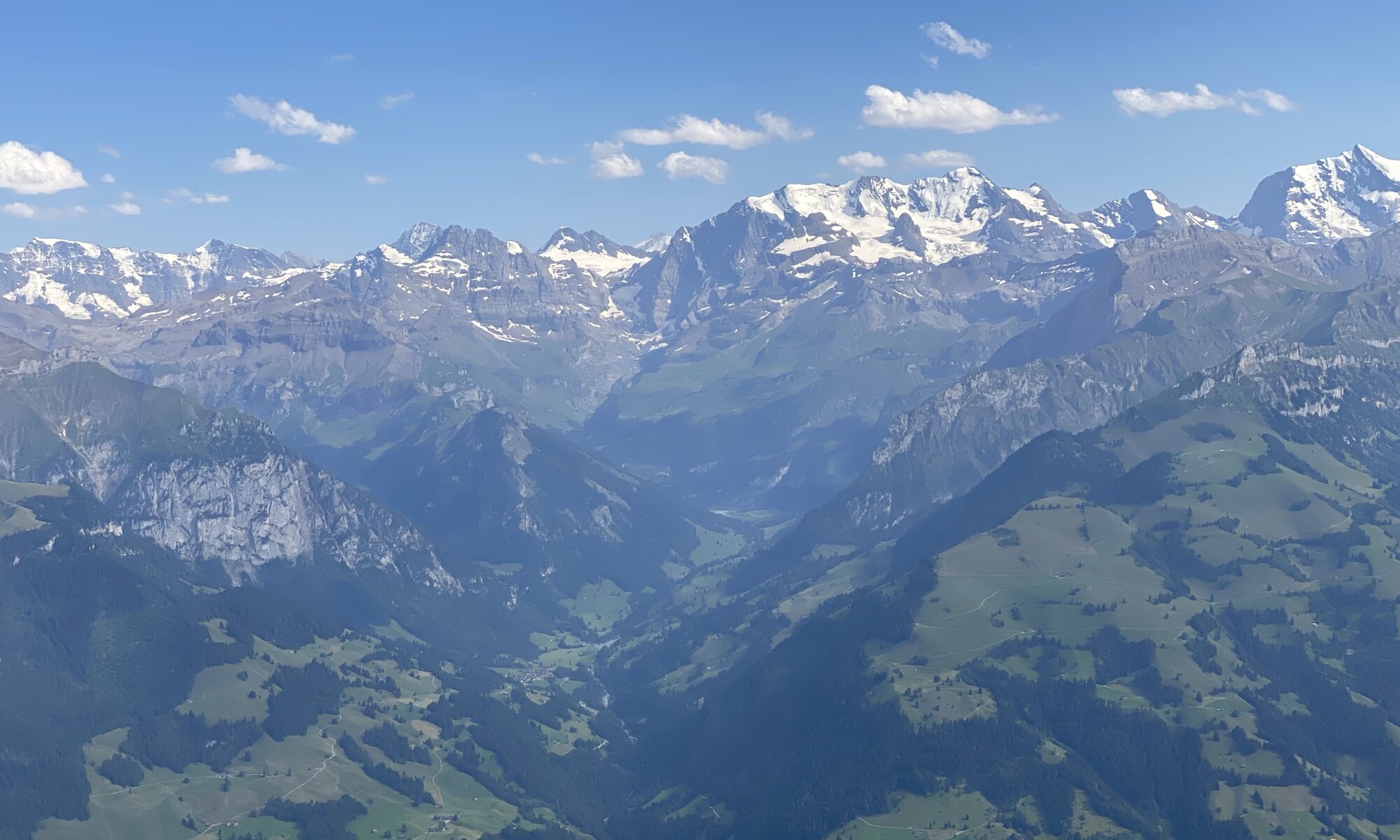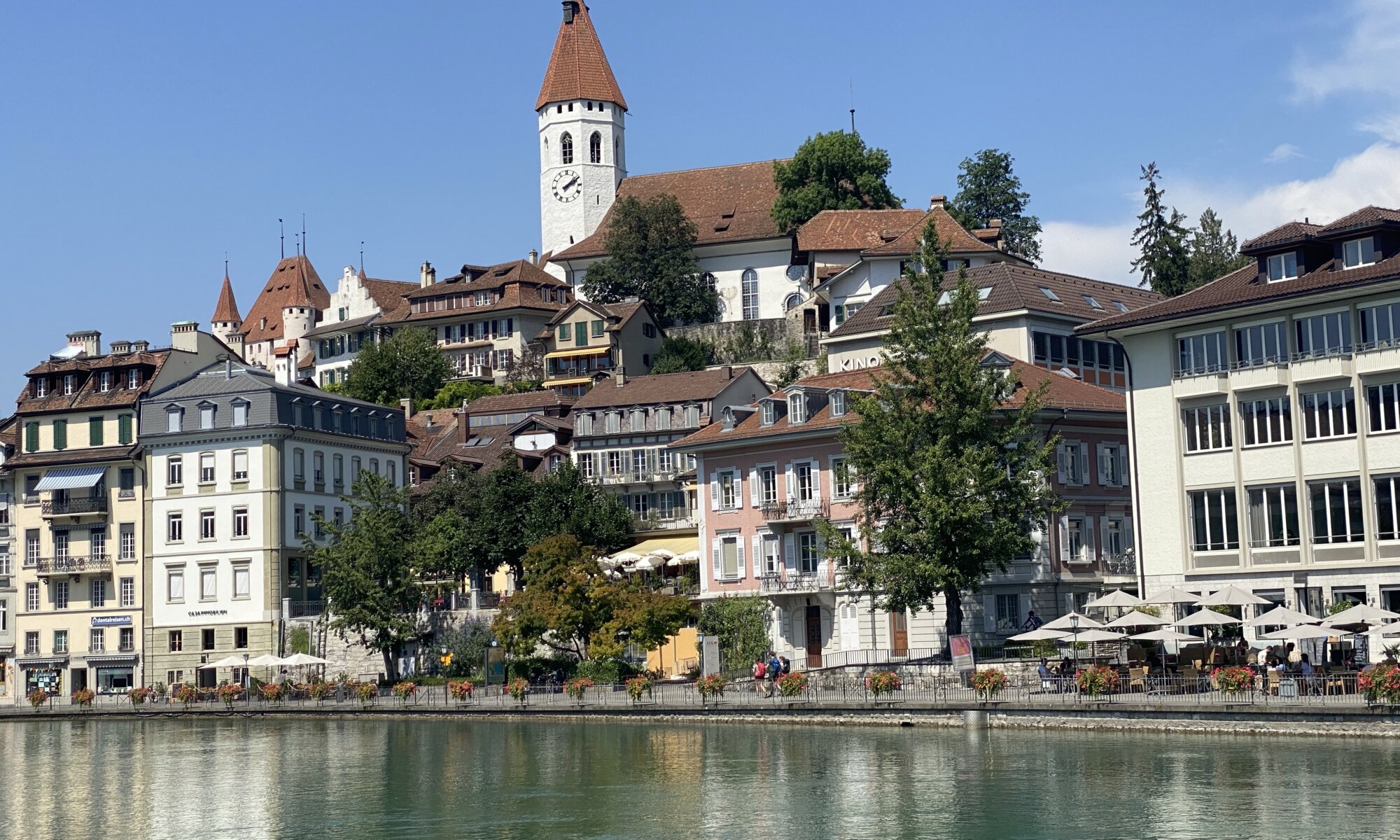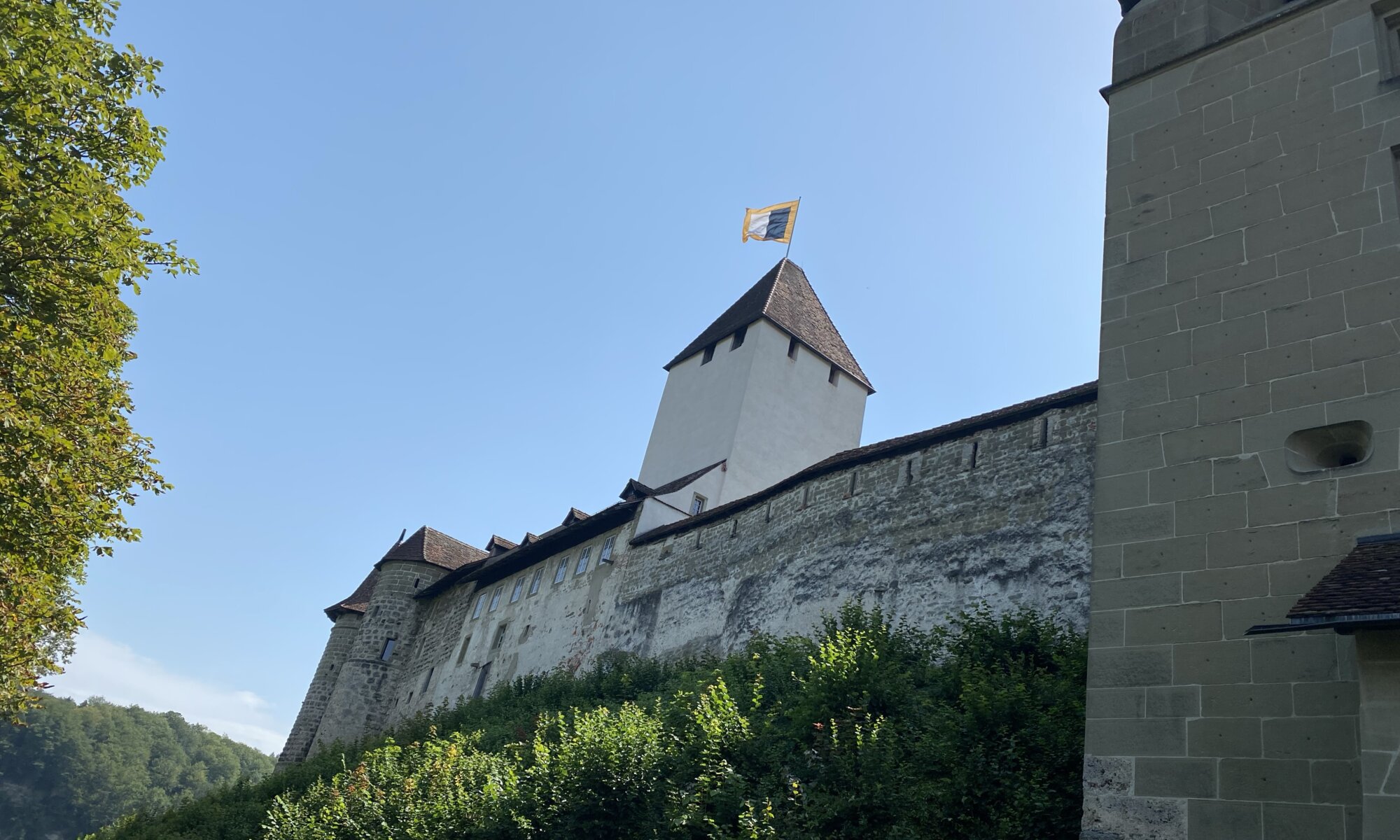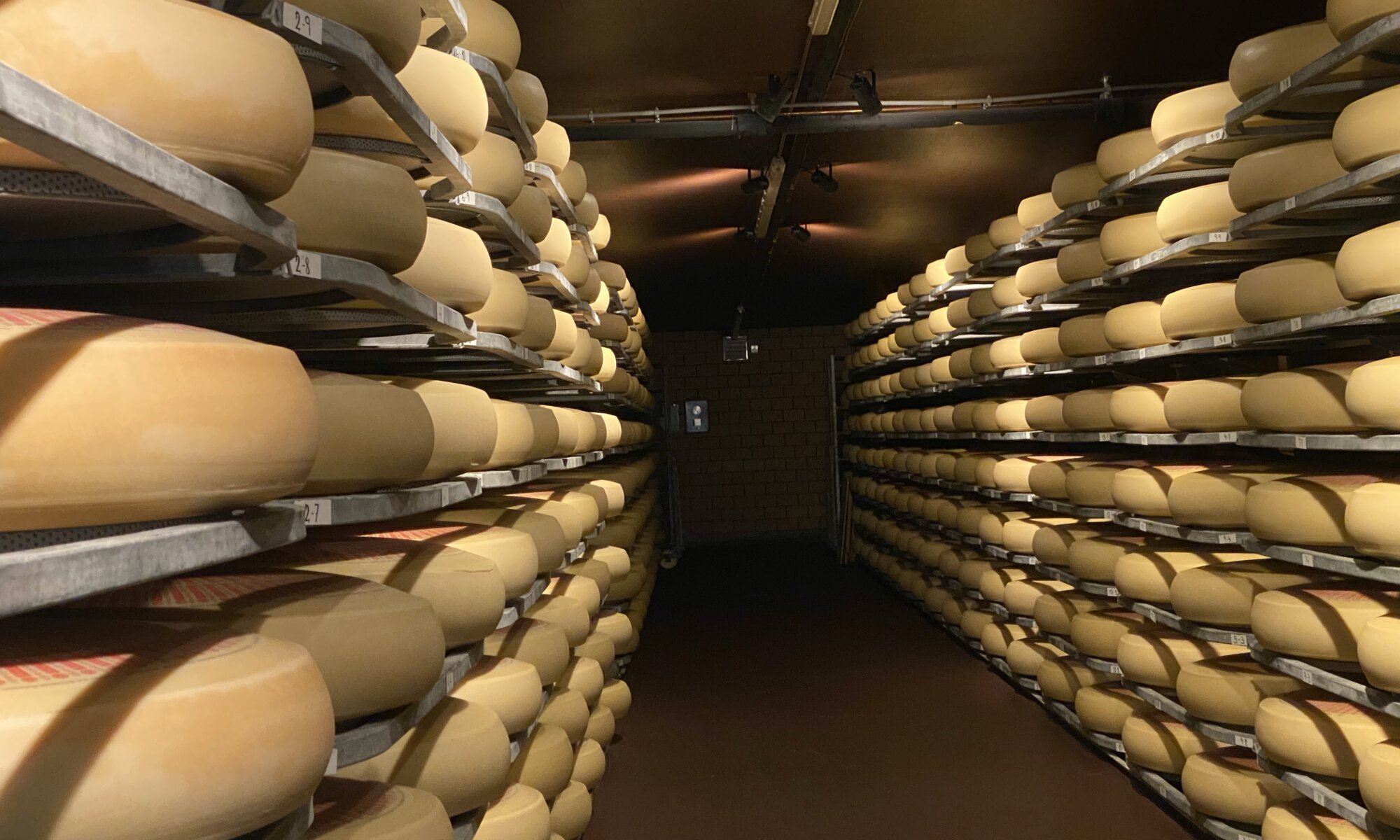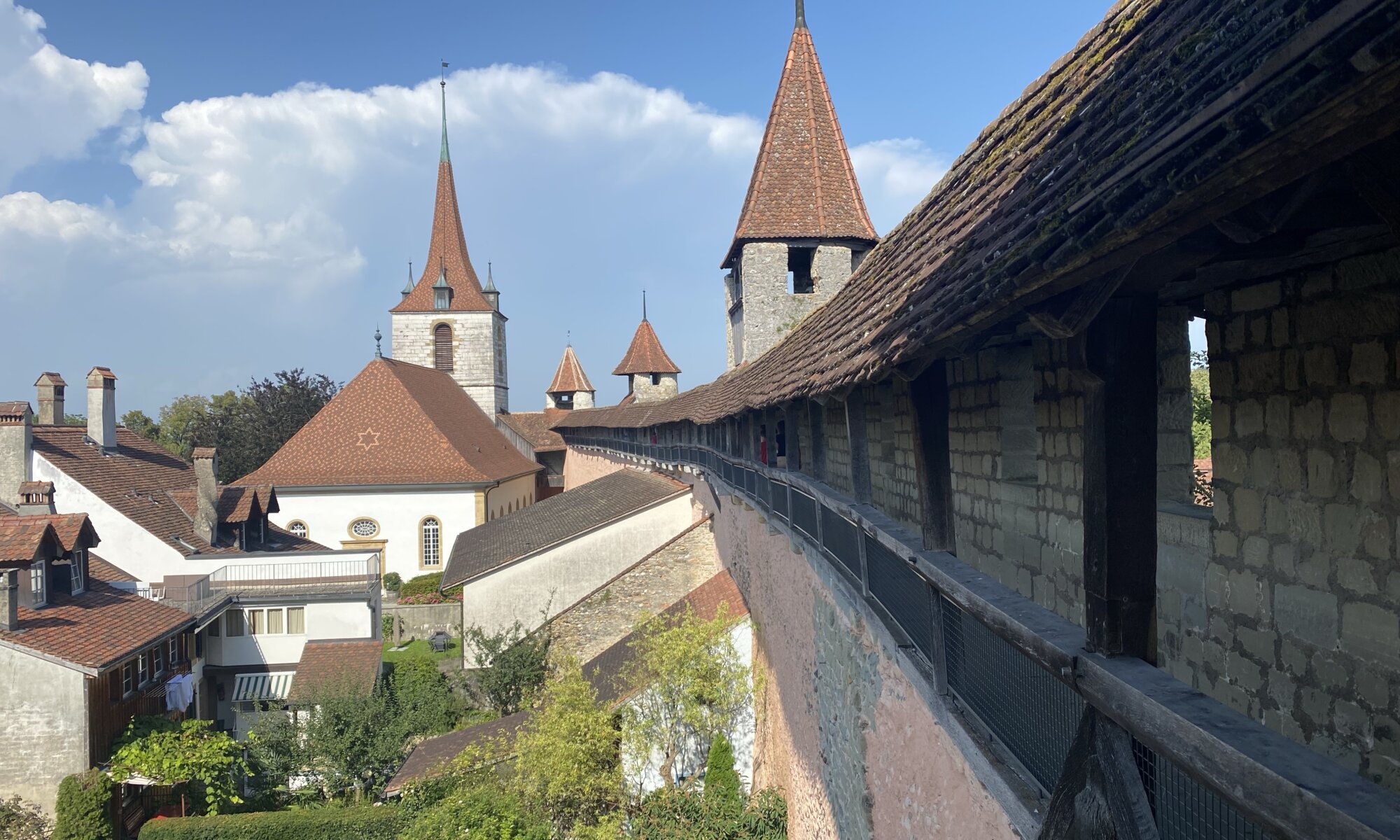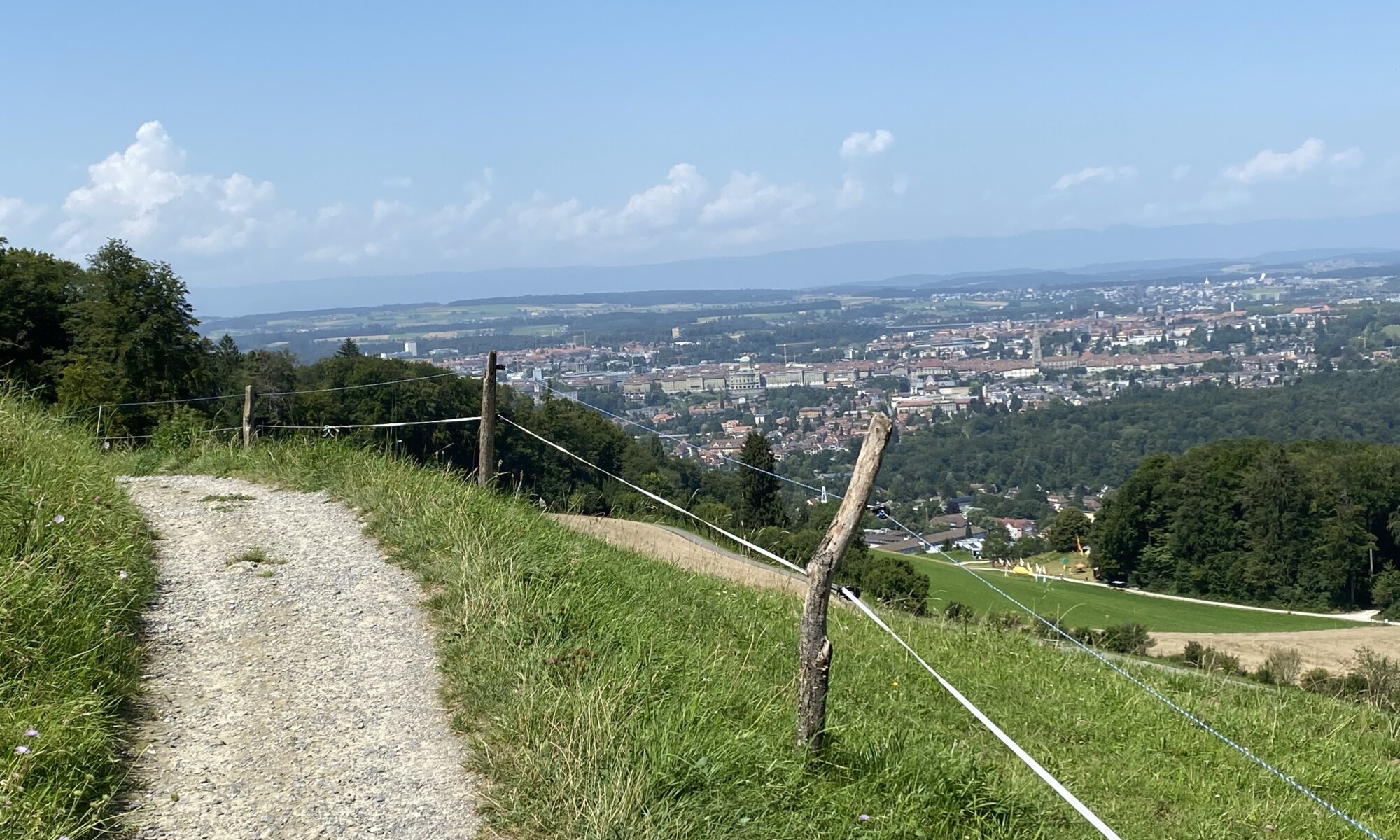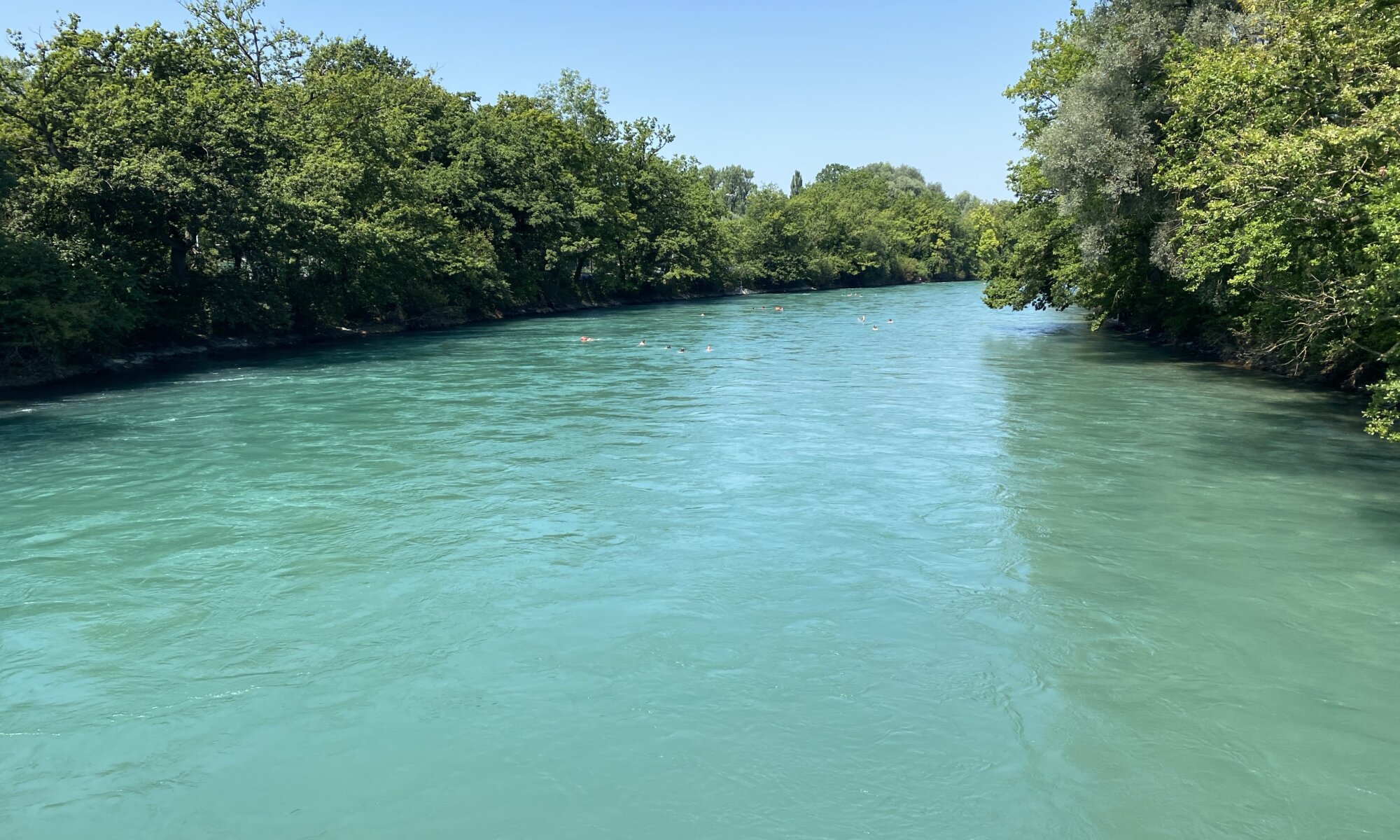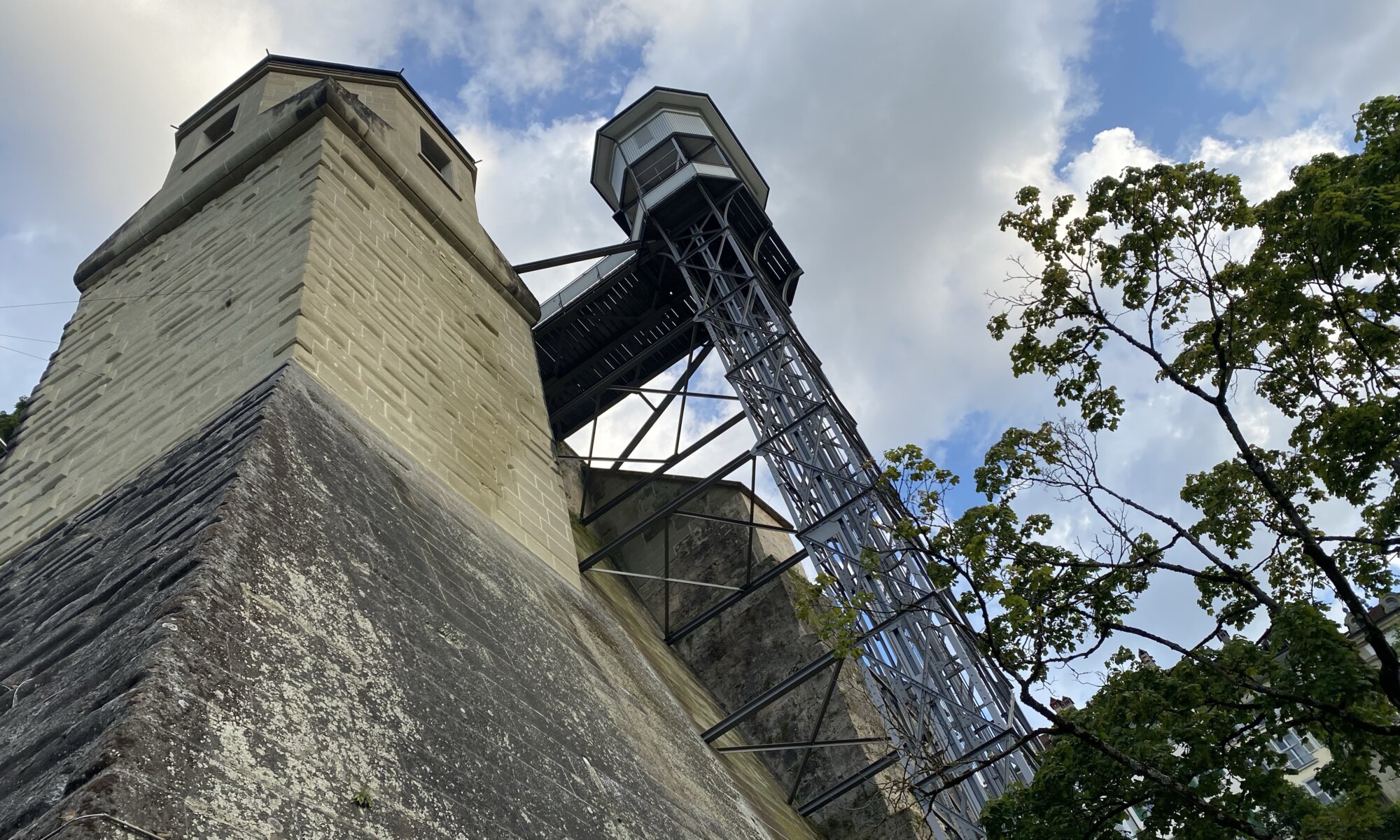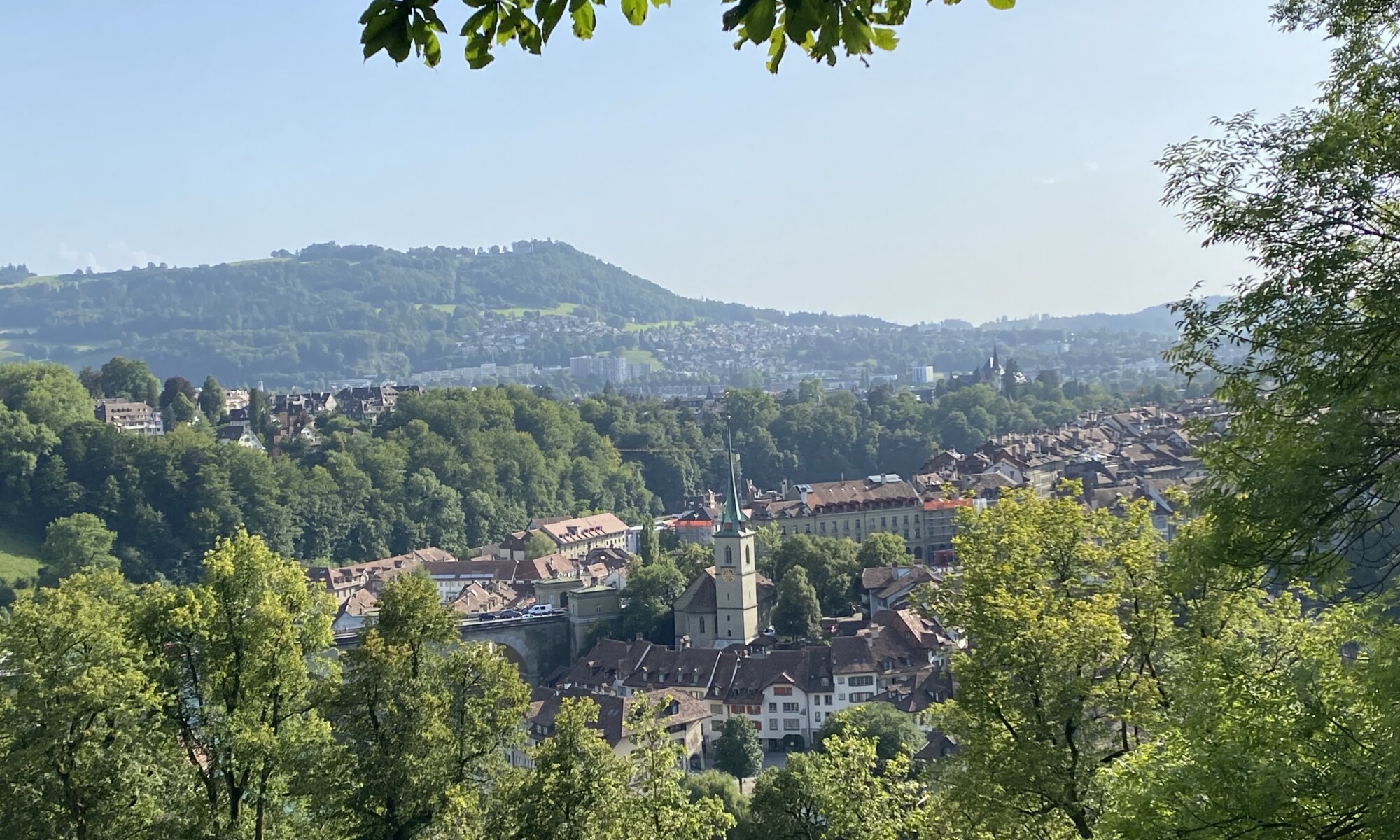The Niesen is a 2362 meters high mountain close to the Thunersee. It is a mountain that is easy to identify because of its special shape: the mountain looks like giant pyramid and creates a shadow in the form of a triangle. Amazing views await those that take the long and steep trip to its top. Since 1856 a restaurant can be found there, and people had to hike all the way – but in 1910 a funicular was opened, the Niesenbahn.
Continue reading “Swiss pyramid”Life at the water
I’ve never heard much about the city of Thun, Switzerland, so far. I just saw that trains from Germany run through it. But as I wanted to get closer to the Alps it looked like a perfect destination for a daytrip. Booking and using trains in Switzerland was so easy (thanks to the SBB smartphone app) that I did it several times during my short visit.
Continue reading “Life at the water”Schloss Burgdorf
To be honest, I just stumbled upon Schloss Burgdorf because of a silly thought: I had visited the Emmental – the valley of river Emme – to see how the famous Emmental cheese is made. But close to the cheese factory the river wasn’t visible and therefore on my way back I just jumped out of the train at a city called Burgdorf: to see the river forming the valley giving the cheese its name.
Continue reading “Schloss Burgdorf”Emmentaler
Emmental cheese is well-known throughout the world. It is a medium-hard cheese with large holes in it which is called Emmentaler or Schweizer Käse in Germany. The name Emmentaler refers to the geographic origin of the cheese as it produced in the valley (‘Tal‘) of river Emme. The second name Schweizer Käse or Swiss cheese brought the cheese its place in everyday German language: if something isn’t solid it is called porous like Swiss cheese.
Continue reading “Emmentaler”Murten
A nice option to travel back in time is a trip to the medieval city of Murten. There, the typical structures of cities belonging to the house of Zähringen have been preserved. You can explore the small castle with good views on the lake Murtensee, you can walk through the historical Berntor gate and best of all: you can climb on top of the old city walls and walk around the city – with marvelous views on the roofs of this old town.
Continue reading “Murten”Gurten
After exploring Bern, you might be ready for a refreshing hike in its neighborhood. The first address for this is the local mountain, the Gurten. It is especially a good option as you can have a wonderful view on the city from up there and you can easily reach it by the funicular Gurtenbahn. The Gurten is 858 meters high and located in the neighboring community of Köniz.
Continue reading “Gurten”Floating in the Aare
It’s a unique pleasure I’ve so far only observed in Switzerland: citizens jumping from bridges and floating in rivers through their cities. But who would want to blame them when the river is so clear and has such a beautiful color like the Aare? It is the longest river of Switzerland; it originates in the Alps and runs into the Rhein.
Continue reading “Floating in the Aare”Senkeltram
The Mattelift is a simple elevator at Bern which you’ll find attached to the Münsterplattform close to the cathedral. It is part of public transport and connects the city center with the lower quarter Matte which was in old times a zone for the lower class and crafts like tannery. Locals call it the Senkeltram – a tramway going up and down on a lace.
Continue reading “Senkeltram”Rosengarten
High above Bern the Rosengarten is a beautiful place to relax. Some people might come for the four hundred types of roses planted there, others to sit in the sun or to play. The best of course is the amazing view on the old city center and the slope of the river Aare.
Continue reading “Rosengarten”Bärengraben
It’s well known that the heraldic animal of Bern is the bear. That’s hard to miss because it can be found everywhere on stuff relating to the city. Why is that? The legend says that the city was named by its founder Berthold V., the duke of Zähringen, after the first animal he has slain in the area. Still today a small number of bears are held in the city, and you can visit them east of the old city center at the river Aare.
Continue reading “Bärengraben”